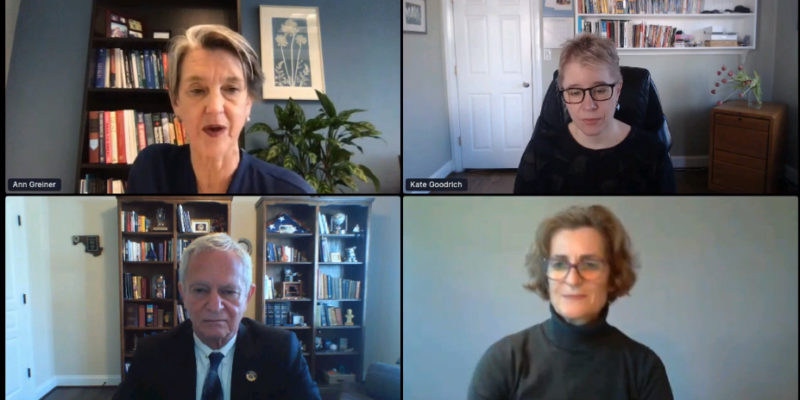
Spending and funding in major care within the U.S. is low and trending decrease in lots of areas, which is distressing for the business given the ever clearer hyperlink between major care spending, improved care outcomes and a decrease spend.
That is the broad discovering of a brand new report by the Main Care Collaborative, a corporation that advances major care. Its lead writer, Dr. Darilyn Moyer, govt vp and CEO of the American School of Physicians and an adjunct medical professor of medication on the Lewis Katz Faculty of Medication at Temple College, mentioned the potential causes and implications of this pattern throughout a session on the Main Care Funding 2.0 State Innovation Workshop on Wednesday.
WHAT’S THE IMPACT?
HIMSS20 Digital
Study on-demand, earn credit score, discover merchandise and options. Get Began >>
Utilizing different international locations as a foundation of comparability, Moyer and her colleagues discovered that well being methods with stronger major care funding function in a more economical and environment friendly method, which holds true throughout not solely disparate international locations, however varied states throughout the U.S. as nicely.
With major care spending in the united statesso low – about 5% of the general healthcare spend – there are few locations to go however up, she stated.
“It isn’t an outlier discovering,” stated Moyer, citing different stories. “There are giant variations throughout states, and these variations have penalties. This affiliation between greater major care spending and decrease charges of utilization throughout three end result measures holds. We discover decrease emergency division visits in states with greater major care spending, and decrease hospitalizations.”
Whereas it is laborious to pinpoint a single issue contributing to the decline in major care funding within the U.S., one issue could also be a demand-driven decline as a result of rising deductibles and value sharing. Encouragingly, from 2019 to 2020, will increase in major care spending outpaced different will increase, and about 20 states so far have strengthened their investments.
Whereas major care utilization rose barely when the Inexpensive Care Act’s Medicaid expansions occurred in 2014, total major care utilization developments are flat and even detrimental in commercially insured populations. In keeping with Moyer, the report confirmed giant gaps throughout racial and ethnic teams in reporting a normal supply of care.
“These gaps, clearly to us, appear to be enjoying a job within the disproportionate influence of the pandemic sure populations are experiencing with COVID-19,” stated Moyer. “The dearth of getting attachment to major care is in all probability one of many elements in seeing the horrible burden these populations are shouldering with this virus.”
Broadly, the first care workforce has stored up with inhabitants development, however there are nonetheless shortages in rural areas relative to city facilities, although in some areas that hole does seem like closing barely.
Moyer stated the motion towards PPO protection, mixed with declining HMO enrollment charges and rising deductibles, are contributing to an total lack of orientation towards major care.
“That’s coinciding with these flat to declining indicators of major care we’re discovering,” she stated. “Customers in excessive deductible plans seem to not have the ability to distinguish between high- and low-value care providers, and haven’t got the chance to have different, lower-cost sources of care.”
In a optimistic pattern, extra states every year measure major care spending as a key measure of well being system transformation and worth. To wit, the governors of Pennsylvania and Connecticut just lately signed govt orders committing to an funding in major care as a element of measuring the full value of care of their respective states.
Dr. Howard Haft, govt director of the Maryland Main Care Program, stated the present trajectory of major care must be altered to fulfill demand.
“There have been growing calls for and reducing assets,” stated Haft. “It’s extremely insufficient to fulfill the calls for. Different nations have figured this out in a a lot better manner, and that is how we really feel on the major care degree – there’s obtained to be a greater manner.
“This brings into clear focus the significance of coverage,” he stated. “We all know the tectonic plates are shifting below the earth, and there will be an earthquake sooner or later, but we won’t actually predict when they’ll occur. Nicely, it is a pure catastrophe that is looming. Folks will see the collapse of major care until we do one thing, and we now have it inside our energy.”
Kate Goodrich, senior vp of Humana, stated the U.S. has a possibility to study from different international locations. Whereas it is clear that major care funding is at the moment insufficient, discovering the precise degree could also be difficult.
“We all know the connection to utilization,” stated Goodrich. “Understanding what you are making an attempt to realize with funding in major care, and the diploma to which you may get some precision round that, will help inform what our traders ought to deal with. Comparisons are laborious, as a result of our methods are so completely different, however I actually need to be certain we now have alignment and understanding round what we’re making an attempt to realize and what the outcomes are.”
THE LARGER TREND
The Facilities for Medicare and Medicaid Companies put extra deal with major care in its doctor price schedule closing rule that will increase funds to physicians of major care and power illness administration. Widespread workplace go to will increase and different closing rule funds go into impact on January 1, 2021.















